

Santorini, one of the most popular tourist destinations in Greece, could soon be swamped by volcanic eruptions and tsunamis.
The island has been rattled by 6,400 minor and moderate earthquakes this week, sometimes only minutes between each quake.
Greece’s government declared a state of emergency yesterday, with some 10,000 islanders fleeing from the near-constant tremors.
A 5.2 magnitude earthquake shook Santorini on Wednesday – the most powerful recorded since seismographs began wobbling on January 26.
The epicentres of the earthquakes are near the underwater volcano Kolumbo about five miles northeast of the island.
Officials have not linked the recent seismic activity to Kolumbo or the dormant volcano within Santorini’s caldera, Nea Kameni.
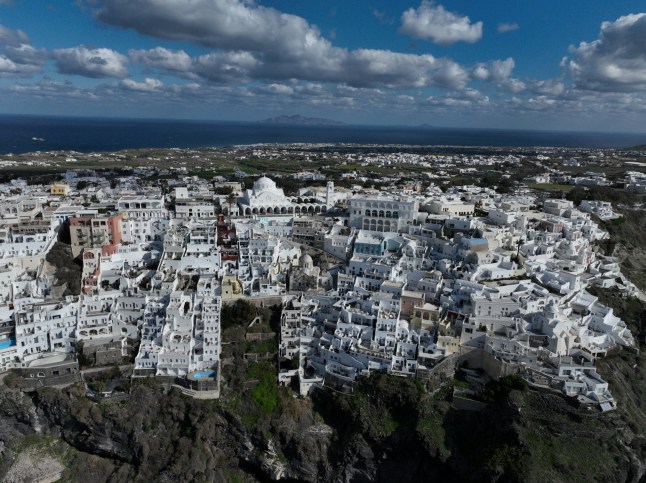
The volcano of Santorini is active (Picture: Reuters)
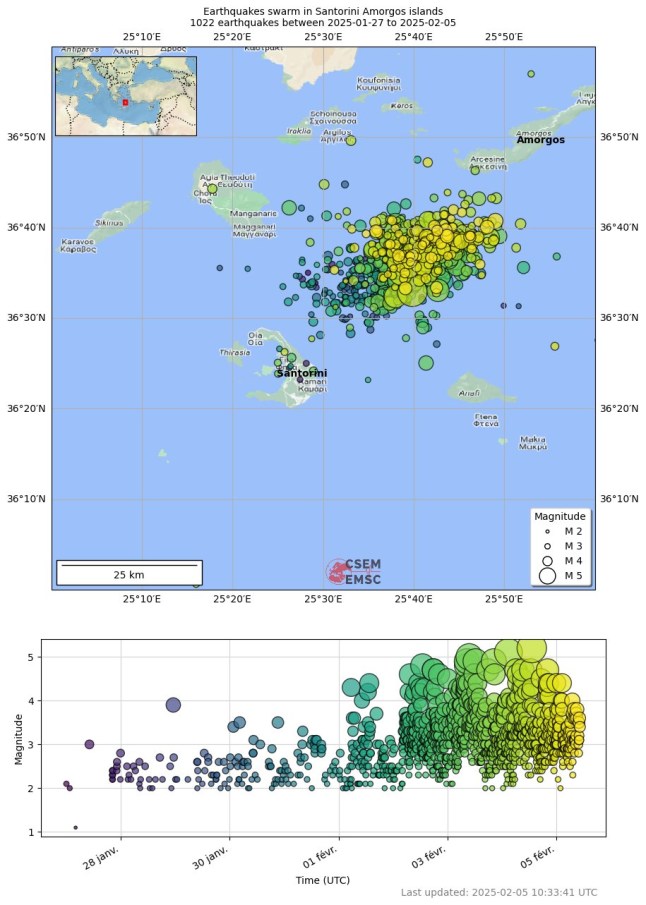
Officials estimate that thousands of tremors have occurred since last month (Picture: Centre Sismologique Euro-Mediterranean Euro-Mediterranean Seismological Centre)
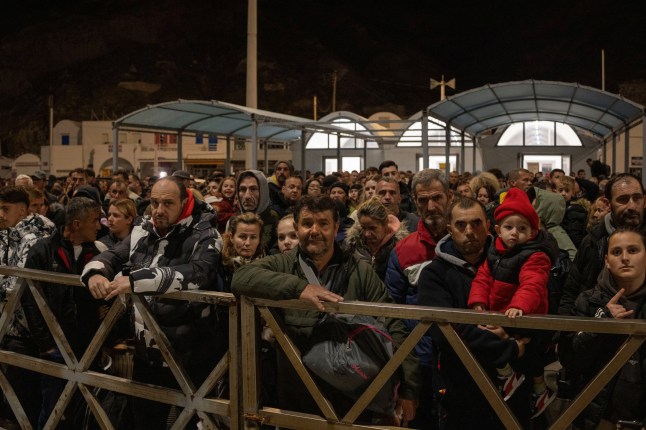
Tourists and islanders waiting to evacuate (Picture: Reuters)
But some geologists say that the tremors that have torn through the Aegean region could be because Kolumbo is about to blow.
The last time Kolumbo experienced a major eruption was 1650, coughing out ash seen as far away as Turkey. Pyroclastic flows – fast-moving, searingly hot clouds of volcanic ash and gases – killed 70 people.
Scientists doubt there will be a repeat of this, or of the 1956 Amorgos earthquake, which reached a magnitude of 7.8 and killed 53 people.
Tectonic plates – huge pieces made of the planet’s crust – pull apart, crash together and slide past each other, causing earthquakes.
Santorini is perched on the tectonically active southern Aegean Sea, meaning the current quakes could be caused by the plates chaffing, possibly irritating the volcanic system coursing around the island.
Geology professor Avraam Zelilidis, of the University of Patras, suggested the swarm of quakes is due to volcanic rumblings.
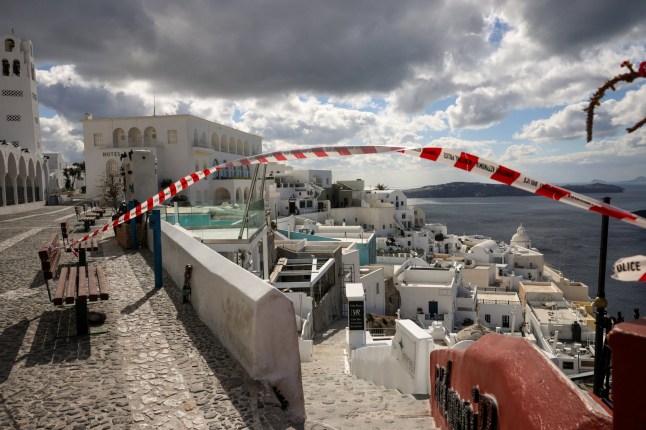
Most scientists say that the seismic activity is not linked to volcanoes (Picture: Reuters)
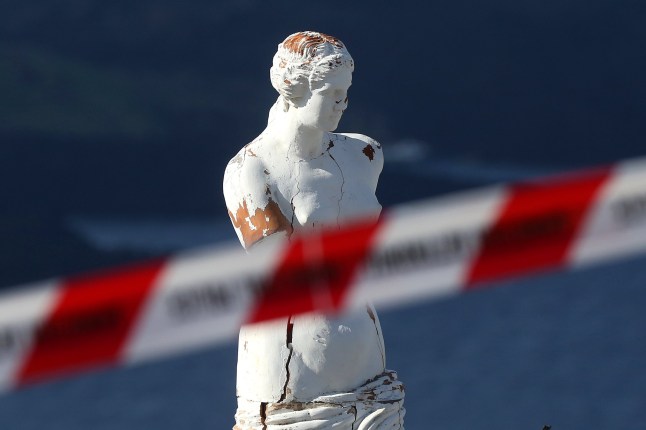
Experts doubt any future eruption on Santorini would be as powerful as the one that, some 3,500 years ago, formed the island’s multicoloured beaches and rock formations (Picture: EPA)
‘Because the seismic activity has intensified and stabilised in the last four days, it shows that the earthquakes are associated with the volcano,’ Zelilidis told SKAI, a Greek TV network.
Costas Synolakis, who studies natural hazards at the USC Viterbi School of Engineering, said he is ‘99% certain’ Kolumbo will erupt.
‘Santorini has started ringing bells, we may have a small explosion and a tsunami,’ he said, warning if an eruption occurs, the volcano could collapse into the sea and push out tsunamis.
‘What I fear is that when a tsunami hits, people sit and film with their cameras, instead of moving away,’ he added to Live News.
While earthquakes can happen with next to no warnings, volcanoes tend to put out some warning signs before they erupt. Magma elbows its way through rock in such a way that it causes distinctive types of quakes, deforming the land as it ascends.
Magma – molten rock – is oozing in a recently discovered chamber beneath the Kolumbo volcano.
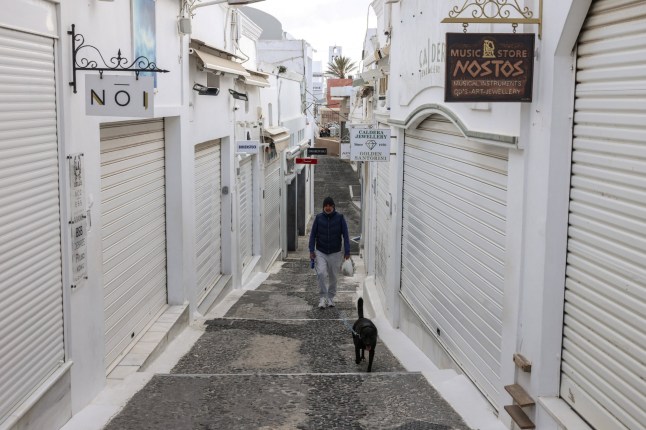
The island was placed into a state of emergency this week (Picture: Reuters)
But Michele Paulatto, an advanced research fellow in volcano geophysics, strikes a far different tone.
‘There has been some slight increase in activity at Kolumbo volcano and Santorini volcano, enough to warrant close inspection, but not enough to raise the volcanic alert level,’ he told Forbes.
‘Earthquakes can trigger eruptions, but I am unaware of that happening at Kolumbo or Santorini. The earthquakes have mostly been away from the volcanoes.’
Paulattoo added that if seismic activity increases in the days ahead, an eruption would be more likely.
Civil protection officials are monitoring Santorini’s volcanic activity and said ‘it seems that there is a mild seismovolcanic excitation’.
‘This is a phenomenon that the state has been informed about, has taken measures, it is a very slow phenomenon, and we must distinguish it from what is happening now,’ Costas Papazachos, professor of lithosphere physics, seismology and applied geophysics at the Aristotle University of Thessaloniki, said.